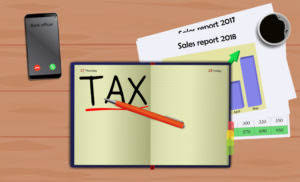
If you are ready to take back control of your life and enter addiction treatment, contact a treatment provider today to explore your rehab options. You can also explore our rehab directory to find treatment options, including sober living homes, near you. Whether it be a drug court referral, sober living after rehab or detox, and even early release from incarceration or house arrest. We can help by providing clean, safe, and affordable sober living housing. Our homes are conveniently located near the necessities of life, including bus lines, shopping centers, recovery meetings, and employment opportunities.
Best Sober Living Homes in New Jersey

In its simplest form, an Oxford House is a shared residence where people in recovery from drug and alcohol addiction can live together and support each other in a drug and alcohol-free environment. Anyone who feels they need sober house more time to solidify habits and coping mechanisms before they return to everyday life should consider a sober living home. Many residents have completed a drug rehab program before moving in (e.g., a 30-day, 60-day, or 90-day residential program) or are currently enrolled in outpatient care. Recovering from addiction can be a daunting endeavor, Avenues New York is here to provide all the help you need. Avenues NYC is the top provider for luxury sober living and recovery services in the New York City area. Avenues provides an unmatched experience for men seeking recovery from drugs and alcohol.

Learn About Addiction

To find out how much of the cost of sober living housing your health insurance will cover, it is best to call your insurance company before committing to a sober living home. Drug detox can vary according to the patient’s addiction factors, including the substance abused, how long the addiction has lasted, the patient’s medical condition, if any other disorders are present, and more. Our skilled and credentialed team at Gratitude Lodge work closely with every patient going through drug detox, facilitating the beginnings of a successful recovery at our rehab addiction centers in Orange County, CA. There is a continuum of care Alcoholics Anonymous in substance abuse treatment that includes sober living. Anyone who is being discharged successfully from an inpatient rehab setting should consider transitioning to a sober living home.

South Jersey Recovery Residences
Sober living environments in California are typically designed to provide a supportive and structured space for individuals in recovery to transition back into independent living while actively maintaining their sobriety. Residents are often required to take drug tests and demonstrate efforts toward long-term recovery. Vanderburgh Sober Living (VSL) is a trusted name in the recovery housing community, offering a charter-based model that supports independently operated sober homes throughout Connecticut. Each VSL Chartered Home is committed to providing a safe, structured, and supportive environment for individuals in recovery. Halfway houses, on the other hand, are typically more structured and may be mandated as part of a court-ordered treatment program. Halfway houses are often reserved for those who have completed a residential treatment program and require additional support and supervision as they transition back into the community.
- Avenues NYC is the top provider for luxury sober living and recovery services in the New York City area.
- Halfway houses serve as the halfway point between an institution and independent society, with residents usually coming from either correctional or inpatient treatment facilities.
- The benefits of sober living extend from interpersonal relationships to less risk of relapse.
- Its work has helped set clear standards for sober housing, giving residents, providers, and families greater confidence in the recovery process.
- The average stay is about a year, but many residents stay three, four, or more years.
- Many residents complete a rehabilitation program prior to approaching a sober living home, but this is not mandatory.
- If you or a loved one are pursuing addiction recovery, sober living housing could be the next step on your journey.
- Also like other sober-living environments, halfway houses generally have systems in place to keep residents sober, and drugs tests are usually administered to monitor for any substance use.
- Avenues NYC strives to foster a supportive, safe, comfortable, community-oriented sober environment in which residents can build a lasting lifestyle of health and wellness.
With over 7,000 square feet of open floor plan and separate male and female housing, our lofts foster an open community that no other NY residence can offer. The chic converted warehouse space is just steps away from exquisite views of the East River, amazing boutiques, cafes, and is only a ten-minute subway ride from Union Square, the Village, and Downtown Manhattan. We believe that no one should be denied the opportunity to live in a safe and supportive environment due to lack of information or financial barriers.





